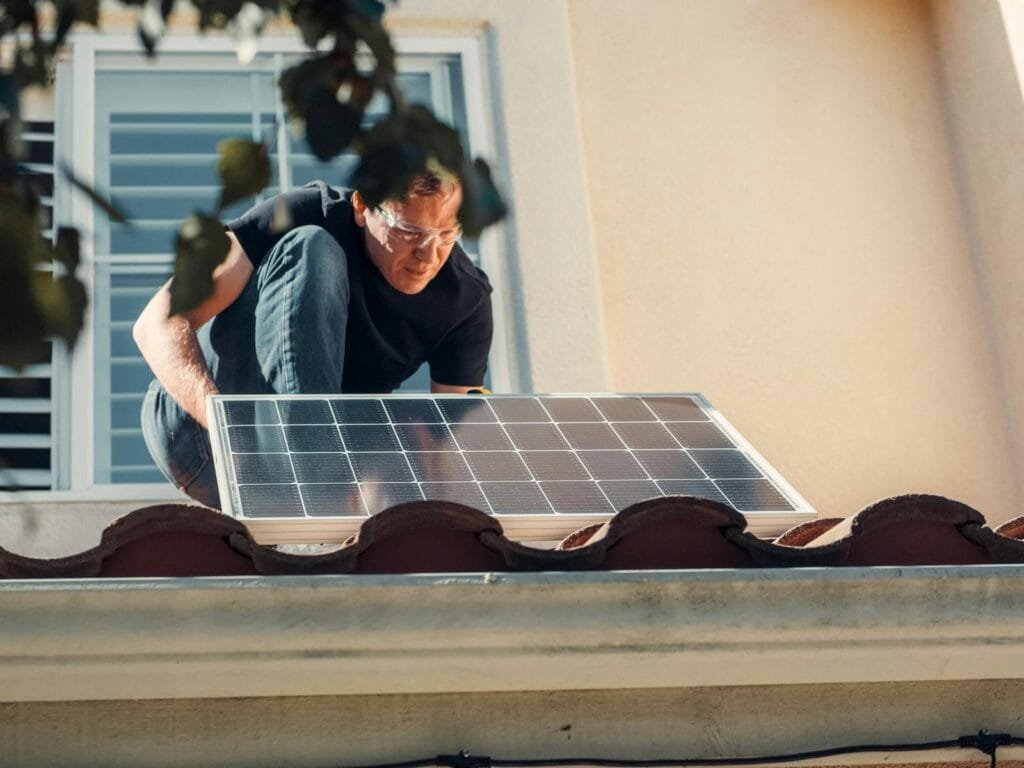Getting Started with Solar Power

Switching to solar power is a great way to reduce your carbon footprint and lower your energy bills. Here’s a guide on how to get started, what to look for, and the costs associated with different solar power systems.
This is a long-term investment that pays off through energy savings, environmental benefits, and financial incentives. By starting with a careful assessment of your energy needs, researching reputable installers, and taking advantage of incentives, you can make an informed decision on the right solar system for your home.
1. Where to Start
Assess Your Energy Needs
Before investing in solar panels, it’s essential to understand how much electricity you use. Start by reviewing your electric bills to calculate your average monthly usage (in kilowatt-hours, or kWh). This will help you determine the size of the system you need.
Check Your Roof’s Suitability
- Roof Condition: Ensure your roof is in good shape, as solar panels typically last 25-30 years. If you need roof repairs or replacement, it’s best to do that before installing solar.
- Orientation and Tilt: Solar panels work best on roofs with good sun exposure. South-facing roofs are ideal in the northern hemisphere, but east- or west-facing roofs can also work.
- Shading: Assess if trees, chimneys, or nearby buildings cast shadows on your roof. Shade can reduce the efficiency of your solar panels.
Explore Incentives
Solar systems come with significant upfront costs, but government incentives can make them more affordable:
- Federal Tax Credits: In the U.S., you may be eligible for the federal Investment Tax Credit (ITC), which allows you to deduct 30% of the cost of installing solar from your federal taxes.
- State and Local Incentives: Many states offer rebates, tax credits, or other financial incentives to encourage solar adoption. Be sure to check what’s available in your area.
Choose Between Buying or Leasing
- Purchase: You own the system outright, which allows you to take full advantage of tax credits and energy savings, but the initial cost is higher.
- Lease: Some companies offer solar leases, where you pay little or nothing upfront, but the company owns the system. You benefit from lower electricity bills but won’t receive incentives directly.
2. What to Look for in a Solar Power System
Panel Efficiency and Quality
- Efficiency: Look for panels with a higher efficiency rating (16%-22%) to produce more electricity in less space. Higher-efficiency panels are ideal for homes with limited roof space.
- Quality and Durability: Check for reliable brands with solid warranties. Good-quality panels should last 25-30 years.
Inverters
Solar panels convert sunlight into DC (direct current) electricity, which needs to be converted to AC (alternating current) for use in your home. There are two main types of inverters:
- String Inverters: More affordable but can be less efficient if shading is a concern.
- Microinverters: These are more expensive but can maximize power output in systems with shading or if panels face different directions.
Battery Storage
- Battery Systems: If you want to store excess solar energy for use at night or during power outages, consider adding a battery system. Lithium-ion batteries like the Tesla Powerwall are popular, but they add to the overall cost.
Warranties
- Panel Warranty: Look for a product warranty of 25 years, which covers defects.
- Performance Warranty: This ensures the panels will maintain a certain percentage of their output (usually 80%-90%) over 25 years.
3. Average Prices for Solar Installations
Starter Installation (3-5 kW System)
- Price Range: $9,000 – $15,000 (before incentives)
- Energy Production: 3-5 kW systems typically produce enough electricity to cover the needs of small to medium-sized homes or households with low energy use.
- Savings: Depending on electricity rates and your energy consumption, you can expect to save $500 – $1,200 annually on energy bills.
Full Installation (6-10 kW System)
- Price Range: $15,000 – $30,000 (before incentives)
- Energy Production: A 6-10 kW system will produce more energy, typically enough for larger homes or households with higher energy use (such as electric heating or cooling).
- Savings: Larger systems can save you $1,000 – $2,500 annually on energy bills.
Battery Storage
- Cost: Adding battery storage to your system typically costs an additional $8,000 – $15,000, depending on the size and type of battery.
Net Cost After Incentives
- With Federal Tax Credit: After the 30% federal tax credit, a $15,000 system would effectively cost $10,500, and a $30,000 system would cost $21,000.
4. Final Considerations
Maintenance
Solar panels require minimal maintenance. Occasional cleaning (especially if you live in a dusty area) and yearly inspections are generally sufficient to ensure they perform optimally.
Payback Period
On average, the payback period for a solar system is 6-10 years, depending on local energy rates, incentives, and your energy consumption.
Solar Installer Research
It’s crucial to choose a reputable solar installer. Look for certified professionals (such as NABCEP-certified in the U.S.), check reviews, and get multiple quotes to compare prices and options.
